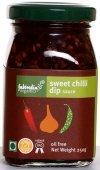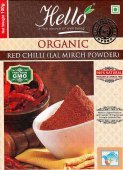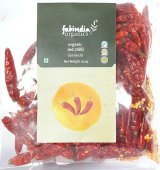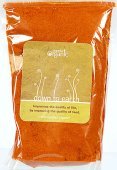Cilli, Cillī: 11 definitions
Introduction:
Cilli means something in Hinduism, Sanskrit, Tamil. If you want to know the exact meaning, history, etymology or English translation of this term then check out the descriptions on this page. Add your comment or reference to a book if you want to contribute to this summary article.
Alternative spellings of this word include Chilli.
In Hinduism
Ayurveda (science of life)
Dietetics and Culinary Art (such as household cooking)
Source: Shodhganga: Dietetics and culinary art in ancient and medieval IndiaCilli (चिल्लि) refers to a type of vegetable, according to the Suśrutasaṃhitā Sūtrasthāna 46.334, and is commonly found in literature dealing with the topics of dietetics and culinary art, also known as Pākaśāstra or Pākakalā.—Suśruta refers to the vegetable flowers, leaves, fruits, stems and bulbs. Of the pot herbs satīna, vāstuka, cuñcu, cilli, green radish, maṇḍūkaparṇī and jivantī were regarded the best.
Unclassified Ayurveda definitions
Source: Wisdom Library: Āyurveda and botanyCillī (चिल्ली) is a Sanskrit word referring to Chenopodium album (lamb's quarters), from the Amaranthaceae family. Certain plant parts of Cillī are eaten as a vegetable (śāka), according to Caraka in his Carakasaṃhitā sūtrasthāna (chapter 27), a classical Ayurvedic work. The plant is therefore part of the Śākavarga group of medicinal plants, referring to the “group of vegetables/pot-herbs”. The plant is cultivated and consumed throughout Northern India. Other commonly used English names include: “melde”, “goosefoot” and “fat-hen”.
Source: archive.org: Sushruta samhita, Volume ICilli (चिल्लि) or Chilli (छिल्लि)—Sanskrit word for a bird corresponding to “merlin”. This animal is from the group called Prasaha (‘carnivorous birds’). Prasaha itself is a sub-group of the group of animals known as Jāṅghala (living in high ground and in a jungle).

Āyurveda (आयुर्वेद, ayurveda) is a branch of Indian science dealing with medicine, herbalism, taxology, anatomy, surgery, alchemy and related topics. Traditional practice of Āyurveda in ancient India dates back to at least the first millenium BC. Literature is commonly written in Sanskrit using various poetic metres.
Languages of India and abroad
Sanskrit dictionary
Source: DDSA: The practical Sanskrit-English dictionaryCillī (चिल्ली).—A cricket; cf. झिल्लिका (jhillikā).
See also (synonyms): cillakā, cillikā.
Source: Cologne Digital Sanskrit Dictionaries: Cappeller Sanskrit-English DictionaryCilli (चिल्लि).—[masculine] a cert. bird of prey; [feminine] (also cillī) a kind of pot-herb.
Source: Cologne Digital Sanskrit Dictionaries: Monier-Williams Sanskrit-English Dictionary1) Cillī (चिल्ली):—[from cilla > cill] f. = llakā, [cf. Lexicographers, esp. such as amarasiṃha, halāyudha, hemacandra, etc.]
2) [v.s. ...] for bhillī (Symplocos racemosa), [cf. Lexicographers, esp. such as amarasiṃha, halāyudha, hemacandra, etc.]
3) [v.s. ...] = lli q.v.
4) Cilli (चिल्लि):—[from cill] m. a kind of bird of prey (cf. cilla and gāṅgacillī), [Suśruta i, 7, 4 and 46, 2, 21]
5) [v.s. ...] f. a kind of pot herb (llī, [Caraka; 1, 27, 88; Suśruta i, iv, vi]), i, 20, 2.
[Sanskrit to German]
Sanskrit, also spelled संस्कृतम् (saṃskṛtam), is an ancient language of India commonly seen as the grandmother of the Indo-European language family (even English!). Closely allied with Prakrit and Pali, Sanskrit is more exhaustive in both grammar and terms and has the most extensive collection of literature in the world, greatly surpassing its sister-languages Greek and Latin.
Kannada-English dictionary
Source: Alar: Kannada-English corpusCilli (ಚಿಲ್ಲಿ):—[noun] = ಚಿಲ್ಲ [cilla]1.
Kannada is a Dravidian language (as opposed to the Indo-European language family) mainly spoken in the southwestern region of India.
Tamil dictionary
Source: DDSA: University of Madras: Tamil LexiconCilli (சில்லி) noun < jhillī. Cricket. See சிள்வண்டு. சில்லி சில்லென் றொல்லறாத [silvandu. silli sillen rollaratha] (நாலாயிர திவ்யப்பிரபந்தம் பெரியதி. [nalayira thivyappirapandam periyathi.] 1, 7, 9).
--- OR ---
Cilli (சில்லி) noun < இல்லி. [illi.] [Telugu, Malayalam: cilli, K. jilli.] Leak, hole, crack; ஓட்டை. [ottai.]
--- OR ---
Cilli (சில்லி) noun < சில்¹. [sil¹.]
1. Circle; வட்டம். (பிங்கலகண்டு) [vattam. (pingalagandu)]
2. Car wheel; தேருருளை. வெள்ளிச் சில்லி புக் குற்றது [therurulai. vellis silli pug kurrathu] (கம்பராமாயணம் கடிமண. [kambaramayanam kadimana.] 71).
3. Field spinach. See சிறுகீரை. சில்லி தங்குமென் பாத்தி [sirugirai. silli thangumen pathi] (திருவிளையாடற் புராணம் அருச். [thiruvilaiyadar puranam arus.] 29).
4. [K. jalli.] Small broken piece of stone, etc.; shivers; துண்டு. திரிந்தன சிகரச் சில்லி [thundu. thirinthana sigaras silli] (கம்பராமாயணம் சேதுபந். [kambaramayanam sethupan.] 22).
Tamil is an ancient language of India from the Dravidian family spoken by roughly 250 million people mainly in southern India and Sri Lanka.
Nepali dictionary
Source: unoes: Nepali-English DictionaryCillī (चिल्ली):—adj. fem. 1. lubricated; greasy; 2. sweet-talking; 3. surrounding by children or cattle;
Nepali is the primary language of the Nepalese people counting almost 20 million native speakers. The country of Nepal is situated in the Himalaya mountain range to the north of India.
See also (Relevant definitions)
Starts with: Cillibilli, Cillika, Cillikai, Cillikalata, Cillikkatu, Cillikkol, Cillimukku, Cillimukkutai, Cillipu, Cillirai, Cillirattam, Cillitam, Cillitamaram, Cillitu, Cillivayan, Cilliya, Cilliyakappai, Cilliyatai.
Query error!
Full-text (+54): Gangacilli, Cillika, Shunakacilli, Mulankarcilli, Silli, Chilli, Cillikkatu, Cillipu, Cillimukku, Cillimukkutai, Cillivayan, Cilliyakappai, Cillikkol, Cillirattam, Cilliyatai, Cilla, Shvetacilli, Shvacilli, Dieng soh silli, Wild chilli.
Relevant text
Search found 29 books and stories containing Cilli, Chilli, Cillī, Silli; (plurals include: Cillis, Chillis, Cillīs, Sillis). You can also click to the full overview containing English textual excerpts. Below are direct links for the most relevant articles:
Brihad Bhagavatamrita (commentary) (by Śrī Śrīmad Bhaktivedānta Nārāyana Gosvāmī Mahārāja)
Verse 2.4.69 < [Chapter 4 - Vaikuṇṭha (the spiritual world)]
World Journal of Pharmaceutical Research
Bioefficiency of Capsicum annuum extract on lipid in bivalves post arsenic. < [2023: Volume 12, November issue 19]
Eco-friendly management of chilli fruit rot caused by colletotrichum capsici < [2016: Volume 5, April issue 4]
Molecular characterization of begomovirus in chilli leaf curl disease. < [2015: Volume 4, March issue 3]
Marma-sastra and Ayurveda (study) (by C. Suresh Kumar)
Marmas of the Extremities (introduction) < [Part 2 - Study of Marmas]
Parables of Rama (by Swami Rama Tirtha)
Story 149 - Right imagination < [Chapter XXIV - Thought Power]
Padma Purana (by N.A. Deshpande)
Chapter 103 - How to Meditate on Kṛṣṇa in Vaiśākha < [Section 5 - Pātāla-Khaṇḍa (Section on the Nether World)]
O God! Give me a Loaf of Bread < [January – March, 1987]
English Language Teaching and ‘LAGAAN’ < [April – June, 2004]
A Quaint Bond < [July – September, 1983]
Related products
(+2 more products available)





